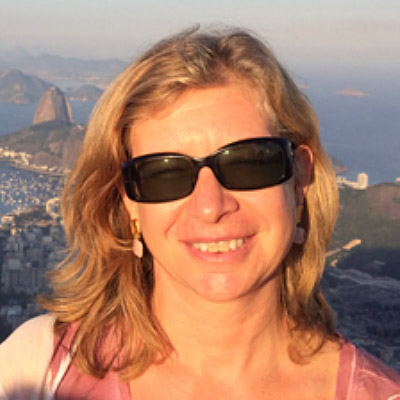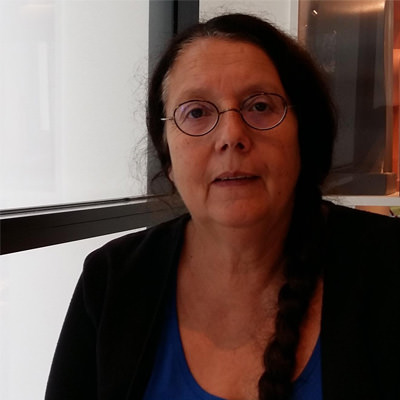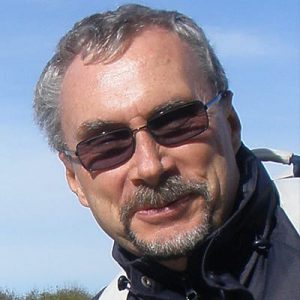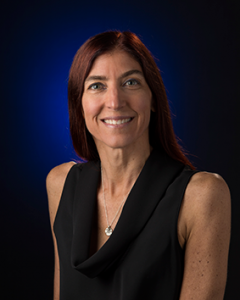Plenary speakers
Plenary speakers
Debashish Bhattacharya
Department of Biochemistry and Microbiology, Rutgers University, New Brunswick, USA
 Debashish Bhattacharya is a Distinguished Professor in the Department of Biochemistry and Microbiology at Rutgers University. His group and collaborators work in the field of algal genomics and evolution and investigate the complex paths of algal origin through endosymbiosis. Phylogenetics, genomics, a variety of bioinformatic approaches, and functional methods are used to understand how organelles were integrated into “host” cell metabolism. His group works on the intriguing photosynthetic amoeba Paulinella that gained its photosynthetic organelle (plastid) independent from plants and algae and provides an invaluable resource for understanding how organelles evolve. The Bhattacharya group also maintains interests in novel approaches to algal biology, including work done with Mehdi Javanmard at Rutgers Electrical and Computer Engineering to develop a device and statistical models to determine cell health by studying their impedance response in an electrical field.
Debashish Bhattacharya is a Distinguished Professor in the Department of Biochemistry and Microbiology at Rutgers University. His group and collaborators work in the field of algal genomics and evolution and investigate the complex paths of algal origin through endosymbiosis. Phylogenetics, genomics, a variety of bioinformatic approaches, and functional methods are used to understand how organelles were integrated into “host” cell metabolism. His group works on the intriguing photosynthetic amoeba Paulinella that gained its photosynthetic organelle (plastid) independent from plants and algae and provides an invaluable resource for understanding how organelles evolve. The Bhattacharya group also maintains interests in novel approaches to algal biology, including work done with Mehdi Javanmard at Rutgers Electrical and Computer Engineering to develop a device and statistical models to determine cell health by studying their impedance response in an electrical field.
Plenary talk: Using Paulinella to decipher how organelles are integrated into host biology
The endosymbiotic origin of oxygenic photosynthesis in the ancestor of algae and plants was a turning point for our planet that laid the foundation for the rise of plants, humans and other multicellular life. The widespread photosynthetic organelle in eukaryotes, the plastid, originated about 1.6 billion years ago in a heterotrophic protist via primary endosymbiosis.
The extreme age of this event has made it very difficult to discern the foundations of primary endosymbiosis in terms of host and endosymbiont integration. All extent plastids are highly derived and reflect 100s of millions of years of divergent evolution in Archaeplastida and algae with secondary or tertiary plastids. This metabolic integration is of vital importance because phototrophic primary production supports many key ecosystems on our planet and provides potential sources of green energy. Therefore, the finding of an independent plastid primary endosymbiosis in the rhizarian amoeba lineage, Paulinella, offered an important model to gain fundamental understanding of how organelles are formed. This plastid, referred to as a chromatophore, originated about 100 million years ago from an alpha-cyanobacterial donor. In my talk, I will describe our recent collaborative work with members of the Paulinella clade that focused on nuclear and chromatophore genome evolution, the role of horizontal gene transfer in these taxa, incident light usage, photosystem efficiency, and how the formation of composite genes may have provided adaptive traits vis-à-vis the novel organelle. These results provide key insights into what was once considered an unreachable goal: to reconstruct early events that mark the transition from symbiont to organelle. Specifically, I will address if and how the chromatophore differs from algal/plant plastids in terms of photosynthetic capacity. Do the photosystems in the chromatophore behave like those in free-living cyanobacteria, or is it plastid-like? And, what does this reveal about host control of organelle function?
Assaf Vardi
Department of Plant and Environmental Sciences, Weizmann Institute of Science, Rehovot, Israel.

The Vardi Laboratory aims at exploring the cellular mechanisms involved in sensing and acclimation to diverse environmental stress conditions during algal bloom dynamics in the ocean. Our research utilizes the recent advances in the field of chemical ecology, combined with cell biology approaches to understand the role of chemical signals (infochemicals) and reveal their function in regulating cell fate decision as programmed cell death, defence and shift in life cycle. We develop model systems in the lab, representing key biotic interaction (host-virus, host-bacteria, predator-prey and allelopathy) which regulate the fate of algal blooms, in order to discover novel signalling and metabolic pathways employed during these interactions. Newly identified genes, lipids and metabolites induced during specific interactions are used as a functional biomarkers for the study of the ecological impact of algal blooms in microbial food webs of natural population in the ocean.
Plenary Talk: The metabolic cross-talk of algal-pathogen arms race at sea
Phytoplankton are unicellular algae that form massive oceanic blooms, covering thousands of square kilometres and responsible for half of the photosynthetic activity on Earth. Microbial interactions that regulate the fate of algal blooms play a profound role in determining nutrient cycling in the ocean and feedback to the atmosphere. Nevertheless, we are still lacking fundamental understanding of the cellular mechanisms and the chemical language that mediate these interactions. We therefore develop model systems in the lab, representing key biotic interaction that are dominant in algal blooms, such as host-virus, host-bacteria, predator-prey and allelopathy. By utilizing the recent advances in the field of chemical ecology, combined with cell biology and single cell genomics approaches, we aim to understand the role of chemical signals (infochemicals) and reveal their function in mediating cell-cell interactions and cell fate decision. Specifically, we focus on how pathogens rewire the metabolic capabilities of their algal hosts as part of the infection strategy. Newly identified genes and metabolites induced during specific pathogenic interactions are used as functional biomarkers to study the impact of microbial cross-talk on the metabolic landscape of microbial food webs in the marine environment.
Laura Airoldi
Università di Bologna, Dipartimento di Scienze Biologiche, Geologiche ed Ambientali BIGEA, sede di Ravenna

Laura Airoldi is Associated Professor at the University of Bologna, Italy. She received a Ph.D. in Marine Science from the University of Genova, and carried out research at several institutions in Italy, Australia, USA and UK. She was a Fulbright Research Fellow at Stanford University. She serves the editorial Board of Marine Ecology Progress Series. She is Regional Coordinator for the Mediterranean Sea in the global Kelp Ecosystem Ecology Network, and is involved in European/global projects (e.g. the MARFOR project on Functional Variability and Dynamics of Responses of Marine Forests to Global Change, the World Harbour Project) on biodiversity conservation in increasingly urbanised marine environments. Her research focuses on understanding how multiple threats act in concert to drive the progressive degradation, fragmentation and loss of canopy-forming seaweeds at local, regional and global scales, and identify concerted solutions for their conservation and restoration.
Plenary talk: Seaweed conservation and restoration under rapid global change
Canopy-forming seaweeds around the world are rapidly deteriorating, with shifts in species ranges, community compositions, and ultimately the form, function and services of these valuable ecosystems. These declines have been long underestimated, and their drivers are not jet fully understood, involving complex interactions between multiple local (nutrient enrichment and high sediment loads, fishing, heavy metal pollution) and global stressors (increasing temperature, high wave exposure, and high UV or CO2) as well as still largely unexplored effects of pathogens and changes in the holobiont communities. While many of the effects of global threats will continue for decades, if not centuries, experiments suggest that the control of local stressors (e.g., marine-protected areas, catchment management to improve water quality) could work as a rapid and cost-effective strategy to limit at least some of the adverse effects, allowing more time to these ecosystem to adjust to climate change. Reforestation is also increasingly included in the array of potential responses and tools. However, the implications of global changes for the broader practice of ecological restoration must be considered, as targets and references must be set against the likelihood that restoring historic ecosystems is unlikely to be easy, or even possible, in the rapidly changing biophysical and social conditions of the future. I introduce controversial issues such as the potential for consideration of alternative (e.g. hybrid to novel) ecosystem states, discuss factors facilitating resilient seaweed ecosystems, and highlight research gaps to increase the short-and long-term success of conservation and restoration efforts.
Myriam Valero
Station Biologique de Roscoff, Sorbonne Université, Roscoff, France

Myriam Valero obtained her PhD from University of Montpellier (France) on speciation with gene flow in a tetraploid grass species. She worked for several years on plant mating system evolution during her post-doctoral position and as a CNRS researcher at the University of Lille (France). She studied the relative role played by the reproductive system (i.e. clonal propagation vs sexual reproduction; selfing vs hermaphroditism; maintenance of sexual polymorphism as gynodioecy and androdioecy) and dispersal capability in shaping the genetic architecture of species. In Roscoff Biological Station, she leads a French-Chilean Laboratory that develops theoretical and experimental work on evolution of life history traits in seaweed. The group is also interested in the role of hybridization and its effect on speciation using a combination of experimental approaches and population genetics structure analyses. Finally, her international lab focuses on the processes that cause changes in marine coastal biodiversity in relation to climate-oceanographic change and human activities at both community and population levels such as conservation genetics and biodiversity of kelp forest and evolution of seaweed domestication.
Plenary talk: Evolution of haploid-diploid life cycles and mating systems in benthic algae: empirical approaches in several brown and red seaweeds
Alternation of meiosis and syngamy in sexual eukaryotes results in the alternation of haploid and diploid generations, whose relative duration and degree of development vary largely among taxa. The evolution of alternation between haploid and diploid phases in the life cycle is a major question in evolutionary biology. In general, genetic models predict evolution towards either haploidy or diploidy, but cannot explain the evolutionary stability of haploid-diploid (or haplo-diplontic) life cycles without considering additional mechanisms.
In most red, brown and green seaweeds, the persistence of both generations suggests that haplo-diploidy is remarkably stable, rather than being a transitional state. These organisms are thus particularly tractable models for testing theoretical hypotheses on the maintenance of haploid-diploid life cycles. In particular, a theoretical expectation is that the evolutionary stability of haploid-diploid life cycles is difficult to explain without considering ecological differences between haploid and diploid individuals. However, to what extent this kind of argument applies to isomorphic haploid-diploid cycles remains unclear. Moreover, seaweeds are also very good models for exploring the consequences of the duration of the haploid and diploid vegetative phases on population structure and mating system evolution. Theoretical models suggest that inbreeding may be associated with life cycles characterized by a free-living prolonged haploid phase (because of the purging of deleterious mutations in the haploid phase). How do the prolonged haploid phase and the rate of asexual reproduction (or selfing) coevolve? How does mating among males and females occur in the field? Is there a difference between haploid and diploid dispersal?
Empirical studies will be presented that have combined population genetics, experimental ecology with crossing experimental approaches to address these general questions in several red and brown seaweeds characterized by haploid-diploid life cycles with different degrees of vegetative development in the haploid and diploid phases.
Public lecture
Mirko Orlić
 Mirko Orlić obtained Ph. D. at the University of Zagreb where he works as a professor of geophysics. Also, he is a full member of the Croatian Academy of Sciences and Arts and the president of the Croatian Committee for Geodesy and Geophysics. Visited several oceanographic institutes in Europe, worked as a visiting scholar at the Scripps Institution of Oceanography (La Jolla, Ca, USA). Initiated and led a series of physical oceanographic experiments in the Adriatic; since 1983 supervises tide gauge station at Bakar. Participated in a number of projects, led five national projects and eight international projects. Major research interests include physical processes in the sea, atmosphere-sea interaction and methods of data analysis. Thus, for example, he investigated the currents and circulation of the Adriatic Sea, worked on the formulation of a method that enables global sea levels to be related to global temperatures and contributed to the development of partial wavelet analysis that has recently found application not only in geosciences but also in economy. Authored and co-authored about 90 refereed publications, more than 140 conference communications and a book on weather and climate of the Adriatic area. Was editor of Geofizika, three conference proceedings and a book, guest editor of Journal of Geophysical Research and Journal of Marine System.
Mirko Orlić obtained Ph. D. at the University of Zagreb where he works as a professor of geophysics. Also, he is a full member of the Croatian Academy of Sciences and Arts and the president of the Croatian Committee for Geodesy and Geophysics. Visited several oceanographic institutes in Europe, worked as a visiting scholar at the Scripps Institution of Oceanography (La Jolla, Ca, USA). Initiated and led a series of physical oceanographic experiments in the Adriatic; since 1983 supervises tide gauge station at Bakar. Participated in a number of projects, led five national projects and eight international projects. Major research interests include physical processes in the sea, atmosphere-sea interaction and methods of data analysis. Thus, for example, he investigated the currents and circulation of the Adriatic Sea, worked on the formulation of a method that enables global sea levels to be related to global temperatures and contributed to the development of partial wavelet analysis that has recently found application not only in geosciences but also in economy. Authored and co-authored about 90 refereed publications, more than 140 conference communications and a book on weather and climate of the Adriatic area. Was editor of Geofizika, three conference proceedings and a book, guest editor of Journal of Geophysical Research and Journal of Marine System.
Plenary talk: Change of climate and occurrence of extremes
Change of climate is visible not only in the atmosphere but also in many other parts of the climate system – for example, in oceans, seas, lakes and rivers. Moreover, the change of the mean state of Earth’s fluids is accompanied by a change in the occurrence of extremes and the latter is usually more worrisome than the slow variability of averages.
In the past, air temperature varied on time scales ranging from millennial to decadal and below. Over the twentieth century, global air temperature rose by approximately 0.8 ºC, which was mostly due to anthropogenic emission of greenhouse gases but was additionally influenced by natural processes. Also considerable was spatial variability of the air temperature increase, implying a change in the atmospheric dynamics and in the development of extremes. With the aim of preparing global and regional air temperature projections, models are developed and tested on past time series. They show that a global air temperature rise of 2.6–4.8 ºC could be expected by the end of this century, if the emission of greenhouse gases continues without restrictions. Observations and modeling are also used to investigate precipitation variability in the past and its expected change in the future.
When considering the oceans, of particular interest is variability of sea level, which has been occurring for hundreds of thousands of years and has brought about global sea level rise of approximately 17 cm over the twentieth century. In the Mediterranean Sea, sea level rose more slowly for a while but has accelerated recently. Again, modeling is used to reproduce observations and to prepare projections of global and regional sea level rise. The global rise is expected to amount to 45–82 cm by the end of the present century, if emission of greenhouse gases is not considerably reduced. Occasionally, the sea overflows the coast even today, particularly during storm surge events. The flooding endangers various places around the world, the best known recent events being those in New Orleans (2005), Myanmar (2008), New York (2012), Philippines (2013), and various Adriatic towns (2008, 2012, 2018). Due to the sea level rise, flooding events will intensify in the future.
As for the lakes and rivers, investigation of their response to climate change is presently gaining momentum. Thus, for example, it has been shown that the flow through Plitvice Lakes in Croatia diminished during the past decades and that the regime of riverine floods in Europe has changed since the mid-twentieth century.
Discussion topics:
• Do we have the observations to support understanding, monitoring, and modeling past, present, and future climate change and its impacts?
• What is underknown in our understanding of Earth’s climate?
• Are there strategies for mitigating climate change?
Chair and moderator
 Paula Bontempi has been a biological oceanographer for 25 years. She began her career as a research intern at the New England Aquarium as an undergraduate at Boston College, later entering the fields of phytoplankton taxonomy and physiology in the Department of Oceanography at Texas A&M University. Research on phytoplankton taxa and coupled physical and biological drivers of global and regional phytoplankton spatial patterns led to interests in marine bio-optics and ocean color remote sensing. She graduated from the University of Rhode Island’s Graduate School of Oceanography in 2001 with a Ph.D., spending time during her studies as a research fellow at the SACLANT Lab in La Spezia, Italy, conducting research in Friday Harbor, Washington, and as a summer intern at NASA’s Goddard Space Flight Center. She moved from the faculty at the University of Southern Mississippi’s Department of Marine Science to NASA Headquarters in 2003. Dr. Bontempi spent over 16 years as the program manager for Ocean Biology and Biogeochemistry at NASA Headquarters, as well as the Lead for NASA’s Carbon Cycle and Ecosystems Focus Area and the agency’s Carbon Cycle Science research lead, before becoming the Earth Science Division’s Acting Deputy Director in 2019. She is Program Scientist for MODIS-Terra and Aqua, Suomi NPP, PACE, NAAMES (EV-S), CORAL (EV-S), and the former SeaWiFS mission. She has been honored to teach the Earth Science module of NASA’s astronaut training class over the last several years.
Paula Bontempi has been a biological oceanographer for 25 years. She began her career as a research intern at the New England Aquarium as an undergraduate at Boston College, later entering the fields of phytoplankton taxonomy and physiology in the Department of Oceanography at Texas A&M University. Research on phytoplankton taxa and coupled physical and biological drivers of global and regional phytoplankton spatial patterns led to interests in marine bio-optics and ocean color remote sensing. She graduated from the University of Rhode Island’s Graduate School of Oceanography in 2001 with a Ph.D., spending time during her studies as a research fellow at the SACLANT Lab in La Spezia, Italy, conducting research in Friday Harbor, Washington, and as a summer intern at NASA’s Goddard Space Flight Center. She moved from the faculty at the University of Southern Mississippi’s Department of Marine Science to NASA Headquarters in 2003. Dr. Bontempi spent over 16 years as the program manager for Ocean Biology and Biogeochemistry at NASA Headquarters, as well as the Lead for NASA’s Carbon Cycle and Ecosystems Focus Area and the agency’s Carbon Cycle Science research lead, before becoming the Earth Science Division’s Acting Deputy Director in 2019. She is Program Scientist for MODIS-Terra and Aqua, Suomi NPP, PACE, NAAMES (EV-S), CORAL (EV-S), and the former SeaWiFS mission. She has been honored to teach the Earth Science module of NASA’s astronaut training class over the last several years.